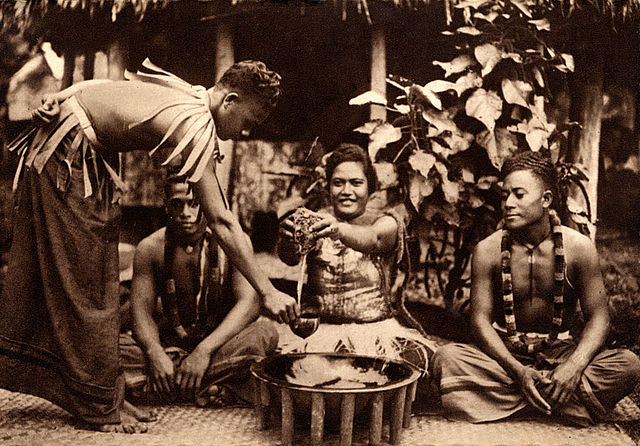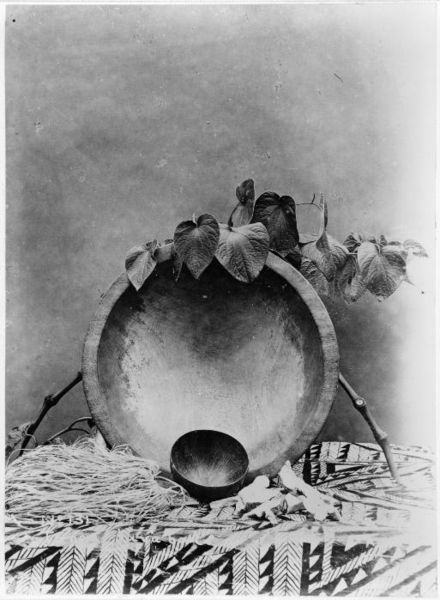The ʻava ceremony is one of the most important customs of the Samoa Islands. It is a solemn ritual in which a ceremonial beverage is shared to mark important occasions in Samoan society. The Samoan word ʻava is a cognate of the Polynesian word kava associated with the kava cultures in Oceania. Both terms are understood in Samoa.
The ʻaumaga, 'ava makers must follow etiquette and cultural protocol in the making and serving of the 'ava. It is usually an honour to be selected for the ceremony. The ʻaumaga, with prescribed roles in the ceremony, were a select guild in the past.
A young plant Piper methysticum
Tanoa bowl on its side, coconut shell drinking cup (ipu 'ava), leaves of the kava plant and strainer
A round open fale tele meeting house in Avao village. Architecture of Samoa define seating areas for the 'Ava ceremony.
Samoan is a Polynesian language spoken by Samoans of the Samoan Islands. Administratively, the islands are split between the sovereign country of Samoa and the United States territory of American Samoa. It is an official language, alongside English, in both jurisdictions. It is widely spoken across the Pacific region, heavily so in New Zealand and also in Australia and the United States. Among the Polynesian languages, Samoan is the most widely spoken by number of native speakers.
Bilingual sign at American Samoa National Park
Bilingual sign in Vatia, American Samoa
Sign with diacritic mark for Hauʻula elementary school in Hawaii







